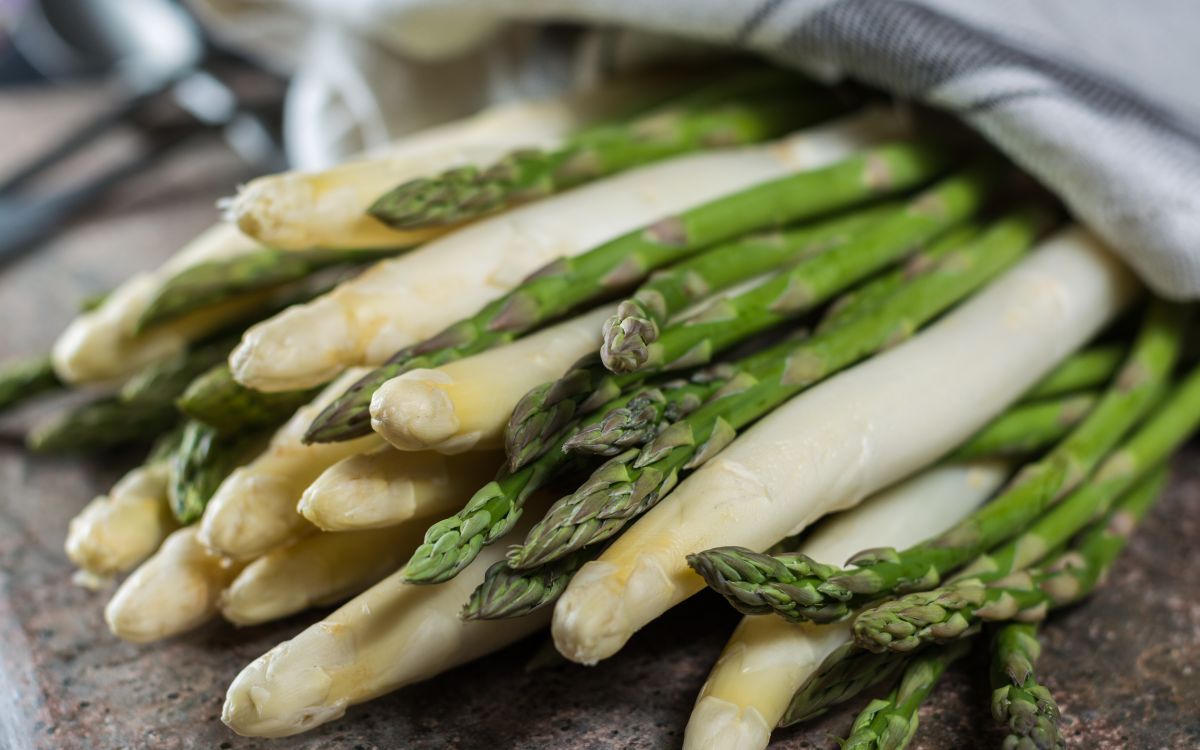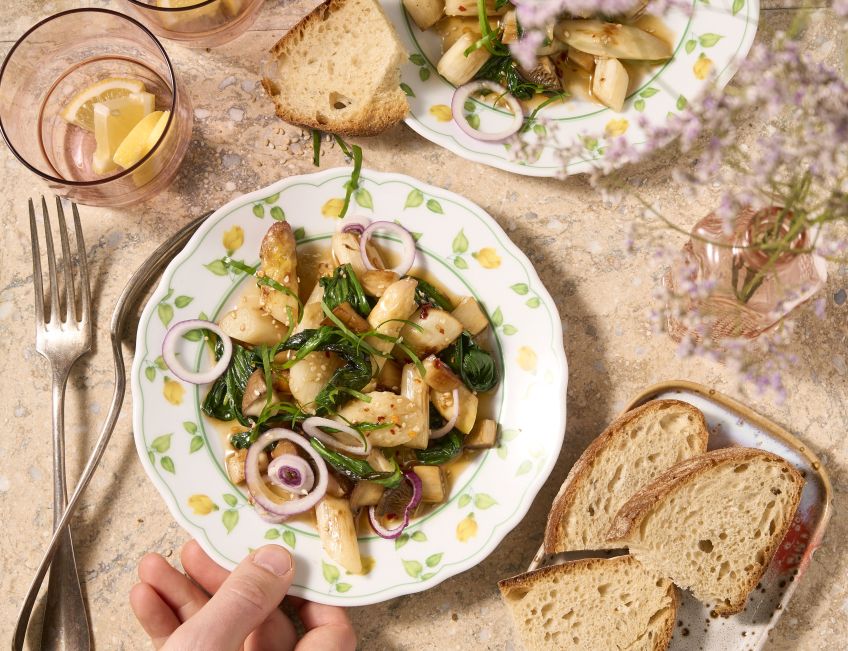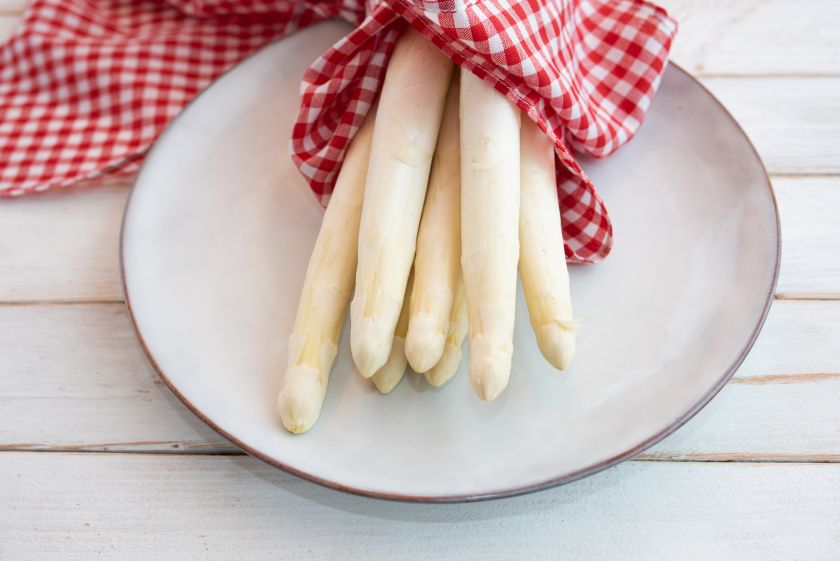Ingredient spotlight: Serving up 9 facts about asparagus

Asparagus season is upon us. Whether white or green, asparagus is not only a seasonal delicacy, but practically a small spring happening. This genuine superfood has many health benefits but doesn’t hang around for long. So why wait? Here, we reveal nine fascinating facts about asparagus.
Now that asparagus season is here, it’s time to treat our palates to the delights of this delicate, slender vegetable. But how exactly does classic white asparagus differ from its green counterpart? And what should you look for when buying and storing this delicacy? Enter the fascinating world of asparagus with us and discover nine exciting facts about this wonderful vegetable.
A culinary harbinger of spring
Asparagus season marks the beginning of spring and is celebrated by many as a minor culinary highlight. In Germany particularly, the asparagus season, which starts around mid-April and traditionally runs until St. John’s Day on 24 June, is highly coveted. “White gold” or “edible ivory” is one of the most expensive vegetables and can only be enjoyed for a short period but comes direct from local fields – being sold from specially erected asparagus huts or at the weekly market, for example. Whether as part of a celebratory meal or simply as a quick lunch, asparagus adds a special touch to any dish.- Different colours, same taste?
Though white and green asparagus belong to the same plant species, they are grown differently. The white variety, also called bleached asparagus, grows underground and is kept covered with soil before harvesting, while green asparagus grows above ground and turns green with the aid of sunlight. They also taste slightly different: White asparagus is often a little more tender and milder in taste, while green asparagus is stronger and slightly nutty. Culinary versatility
Asparagus is extremely versatile and can be prepared in a variety of ways. Whether boiled, sautéed, grilled, turned into a soup (perfect for using up the skins and leftovers!) or salad – there are no limits to the imagination. White asparagus must always be peeled, but with green asparagus cutting or snapping off the lower ends will suffice. Either variety can be boiled or sautéed, or even eaten raw in a salad. Our favourite foodfittery asparagus salads:
Our favourite foodfittery asparagus salads:> Warm white asparagus salad with king oyster mushrooms & wild garlic
> Raw green asparagus salad with cherry tomatoes & mozzarella
> Asparagus salad with strawberries & goat's cheeseRich in nutrients
Both green and white asparagus are rich in vitamins, minerals and fibre. They contain vitamin C, vitamin K, folic acid, potassium and many other nutrients that are important for a balanced diet. Green asparagus contains even more vitamin C and carotene than white asparagus. Incidentally, due to its high folic acid content, asparagus is especially recommended for pregnant women.Though asparagus is filling, it is also low in calories – about 20 kcal per 100 grams. At the same time, its taste is so varied that it can shine even in simple dishes.
Good for digestion & a natural detoxifier
Asparagus has a diuretic effect and supports kidney function, earning it a reputation as a natural detoxifier. The “proteinogenic” amino acid asparagine is responsible for the diuretic effect and thus helps cleanse the body of excess fluid and harmful substances.
Thanks to its high fibre content, asparagus supports digestive health and can help relieve constipation. It also stimulates the production of enzymes that are important for efficient digestion.- Asparagus: an aphrodisiac?
Even the ancient Greeks and Romans considered asparagus to be an aphrodisiac. Perhaps due to its “phallic appearance”. In the 19th century, for example, it was customary in France for a groom to prepare himself for his wedding night by eating copious amounts of asparagus. Although the scientific evidence is not clear, its high content of vitamin E and potassium could stimulate libido and promote sexual health.
Shopping tips
Irrespective of colour and EU trade class I, II or Extra, asparagus should be served as fresh as possible. Here are a few tips on how to check for freshness when grocery shopping. The best way to buy asparagus is locally, of course.> The delicate heads should still be compact
> The ends should not be dry, but juicy
> The spears should not bend
> During the squeak test, the asparagus spears should squeak when gently rubbed togetherA class of its own
The European Union (EU) has defined different trade classes for asparagus as a way of determining its quality and condition.Extra class: Impeccable quality and specific grade and size requirements (at least 24 mm thick) must be met. The “supermodel” spears must be straight, firm and in perfect condition.
Class I: The asparagus may vary slightly in shape and size but should be at least 16 mm thick and of good quality. Minor defects such as slight bends or spots are acceptable.
Class II: Asparagus that does not meet the requirements of Class I, but is still edible, comes under this class: at least 10 mm thick, slightly opened heads, minor colour variations and minimal damage are permitted.
Storage
The motto is: the fresher, the better! But this seasonal vegetable can be kept in the refrigerator for up to three days, provided it is wrapped in a damp tea towel in the vegetable drawer.Anything beyond that can be frozen. Simply wash the asparagus, peel any white spears and pack them into a freezer bag raw for freezing. Vacuum sealing into portions is even better. This helps preserve the aroma for up to six months. To prepare, simply cook the spears directly from frozen for a little longer than usual.
© Fotos: Shutterstock.com, foodfittery


